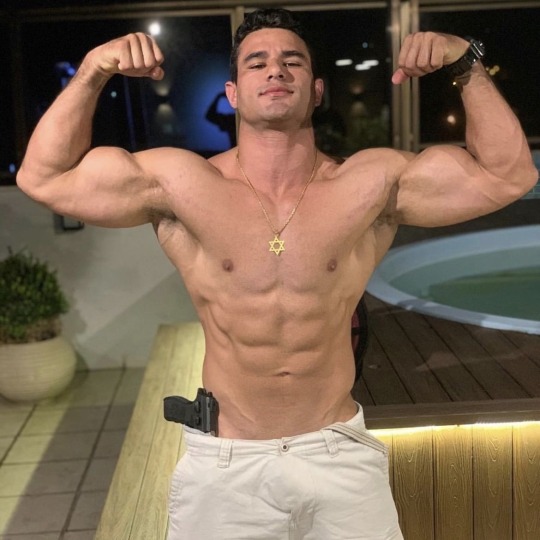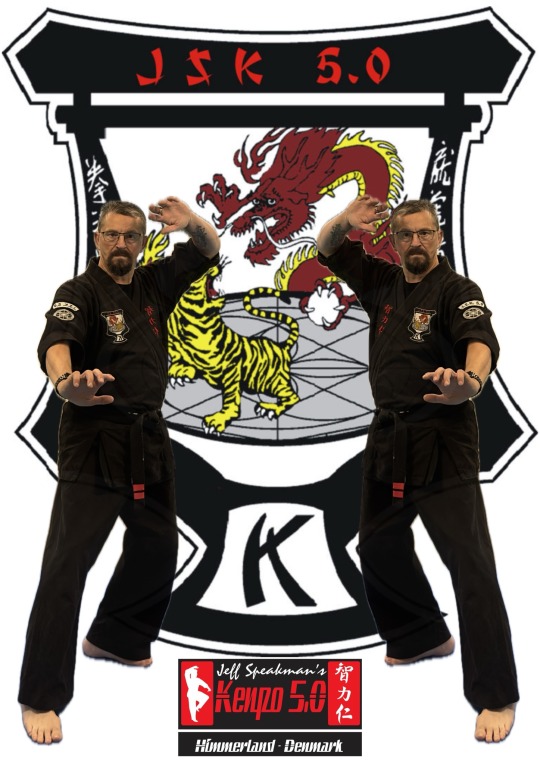#kenpo
Explore tagged Tumblr posts
Text
So I learn a form of martial arts called kenpo, and I'm testing to my next belt come tomorrow. I need to know the kenpo theory for my level if I want to pass, and a classmate convinced me to download a flashcard app to help me learn it. As I was putting in the final few questions, on my phone, the word guessed thing above the keybord things the next logical word is "FEMBOYS". And then I laughed for a solid min, and had to stop to tell yall.
I love being queer. Get to see the funniest sh- I've seen and don't even need to pay
#funny#memes#humor#meme#lol#haha#lgbtq#comedy#lgbtqi community#lgbtq community#lgbtqia#lgbt pride#lgbt#bigender pride#non binary#bigender#bisexual pride#transgender#trans pride#trans#funny content#funny ai#ai generated#ai#femboys#karate#kenpo#martial arts
52 notes
·
View notes
Text









Have a great day! B
#muscle#bodybuilding#biceps#towel tuesday#veins#military#military muscle#usmc#fitness model#kenpo#martial arts#photo dump
62 notes
·
View notes
Text

ED PARKER. (KENPO KARATE) 👊
2 notes
·
View notes
Text
Elvis Presley - Karate Demo ( part 2 ) REACTION
youtube
11 notes
·
View notes
Text






🥋Wulong Vs Mukaku 2🥋
Wulong's Finger Strength Is Unbelievable 💥💥💥
6 notes
·
View notes
Text
Exhaust All Options...
Exhaust All Options | read in full... (5/20/2024)
.
It has been said: “As above, so below, as within, so without, as the universe, so the soul…” - Hermes Trismegistus
.
Always keep a positive mindset and focus with good intentions on achieving your goals. DO NOT SET A TIME LIMIT! Think about each step with strategy, and take each step carefully to achieve your desired goal.
.
Always see things through to the end. The only thing you can never get back is time. So make sure you take the time needed to reach the final destination of whatever goal you are going after. The last thing you want to do is have to come all the way back to the beginning, and redo something that was unfinished; wasting the only precious thing you have in this life... time.
.
Never trash your own mindset or goals. You are the only one that can go get your goals. You do not need to be your biggest opponent in doing so... NEVER SAY:
.
- I can't do that...
- I'm not good enough...
- This will not happen...
- This will never work...
- I'm done...
.
There is no shame in not getting the desired outcome you wish for, as long as you understand the difference between losing and not winning...
.
"Not Winning" means you gave it your best, you seen it all the way through to the end, it just did not work. I can live with that.
.
"Losing" means, you did not try, you did not exhaust all options and you gave up... I cannot live with that.
.
A pessimist sees the difficultly in every opportunity. An optimist sees the opportunity in every difficulty. It does not matter if you can trying to get a black belt, lose weight, start your own business, rekindle a relationship, travel the world or settle down and start a family. No matter your goal, see it through to the end. You owe it to yourself. It is your life, so stop letting social pressure stop you and go live it.
.
Do not be defeated by your inner demons. You are good enough... So go attack your goals and claim victory over your inner demons!
.
Banzai! (万歳)
#soke anshu#anshu christa jacobson#budo ryu kai#budo ryu ninjutsu#ninja#ninjutsu#ninpo#budo#bujutsu#kobudo#kobujutsu#kenjutsu#iaijutsu#jujutsu#kenpo#kempo#karate#martial arts#self defense#taijutsu#ninpo taijutsu#budo taijutsu#zen#philosophy
2 notes
·
View notes
Text

dragom
0 notes
Text
I just got roundhouse kicked in the eye by one of my students 😂😂😂
1 note
·
View note
Text
Reading Minds with Martial Arts!
Reading minds is pretty easy with the martial arts, but it takes some time to cultivate the ability. First, dedicate yourself to doing the forms. Do the forms until they become automatic and you are halfway there. Automatic is where most people stop, and these people end up mouthing about such things as muscle memory. But they have only gone halfway. You must continue to do the…
0 notes
Text
youtube
Kobayashi Naoki's fate led him to Kenichi Sawai, a legendary master of Taiki Shisei Kenpo, Taikiken.
For decades, the rhythmic shuffle of bare feet across a polished wooden dojo floor has signaled the heartbeat of a rare and quietly guarded martial tradition. At first glance, the unassuming exterior of Bidokan—the dojo overseen by Instructor Kobayashi Naoki—might pass unnoticed among Tokyo’s bustling streets. But inside those walls dwells a living heritage, shaped by two legendary masters and nurtured through the unwavering devotion of their heir, Kobayashi himself. Now, through the combined legacy of Sakurakoju Kazutaka’s orthodox Chinese boxing and Kenichi Sawai’s Taiki Shisei Kenpo, or Taiki Ken, this sanctuary has evolved into a place where the old ways remain very much alive, and possibly more relevant than ever in an era of instant gratification.
A Secret Art Unfolds
Few martial arts enthusiasts outside of Japan realize the depth of these intertwined lineages. The late Sakurakoju Kazutaka carried the torch of Chinese orthodox boxing, preserving the heritage of forms and techniques often practiced behind closed doors. Meanwhile, Kenichi Sawai became the only foreigner ever permitted to study under Wang Xiangzhai, the renowned founder of Dai Cheng Quan—more commonly referred to as Yiquan. After World War II, Sawai returned to Japan, forging Taiki Shisei Kenpo, a system whose name comes from the principle that “sincerity reaches the heavens.” Through rigorous training methods such as standing meditation (ritsuzen) and crawling exercises (hai), Taiki Ken quickly earned a reputation for its practicality and explosiveness.
For years, curious onlookers heard rumors of intense training sessions deep in the tranquil forest around Meiji Shrine, where Sawai’s handful of dedicated students braved dawn workouts in near-silence. There, each participant tested their resolve and refined their minds until the body and spirit worked in seamless harmony. Tales emerged of how a single subtle shift in stance or direction could redirect an opponent’s force, leaving them utterly disoriented. It didn’t take long for word to spread: Taiki Ken was one of the strongest, most practical martial arts around, seamlessly fusing Chinese internal methods with Japanese warrior ethos.
Enter Kobayashi Naoki
Born on March 1, 1954, Kobayashi Naoki began his martial arts journey at sixteen years old, joining Sakurakoju Kazutaka’s Dai Nippon Koubukai to immerse himself in authentic Chinese martial lineage. Under Kazutaka’s watchful eye, Kobayashi honed his understanding of body mechanics, breath control, and proper stance. Following the passing of his beloved teacher, fate led him to Kenichi Sawai, the legendary practitioner whose mastery of Taiki Shisei Kenpo was unparalleled. At twenty-eight, Kobayashi began rigorous training under Sawai’s guidance in Meiji Shrine’s forest—a veritable crucible of discipline. Sawai’s instruction was as relentless as it was profound. For ten years, Kobayashi dedicated himself to mastering the principles of Taiki Ken, ensuring that every posture, pivot, and breath had purpose.
When Sawai passed on, Kobayashi felt a renewed sense of responsibility. He had inherited not one but two invaluable lineages: the orthodox Chinese boxing from Kazutaka and Taiki Ken from Sawai. He founded the Bidokan in 1994 as a repository for both traditions, setting a personal mission to teach future generations while maintaining the purity of each discipline. In 2008, the dojo was officially renamed Bidokan to underscore its commitment to the Taiki Ken tradition, but in truth, Bidokan transcends labels—it is a living archive of timeless skills.
Legends and the Rido-kan Connection
Outside of the Bidokan realm, the martial arts community has long whispered about another close-knit circle: the Rido Clan and its cryptic head, Kobayashi Naoki (the same man, though many mistakenly believed them to be separate people), who some said kept the “strongest martial arts” under lock and key. Insiders would mention names like Kazutaka Sakurakoji (another common spelling is Sakurakoju) and Kenichi Sawai almost in the same breath, placing them at the pinnacle of Japan’s martial tapestry. Stories circulated of samurai from the Showa era, men such as Kenichi Sawai who, upon returning to Japan, had sculpted their unique forms of kenpo into unstoppable disciplines.
A deeply guarded system known as Chakryu Shinden Chinese Seiha Kenpo Taiki Shisei had been referenced in hushed tones. It revolved around the concept of Kosaho Riai—a principle of standing in a natural posture and using one’s structure as both a shield and sword. Attacks seemed to bounce off or veer away from the unassuming stance, as though the practitioner had become a rooted tree in a gale. The Rido-kan, as some called it, mirrored the essence of the Bidokan: a dedication to unity of spirit, body, and technique, with secrecy at its core.
Building the Bridge Between Two Worlds
In reality, the divide between the Rido-kan and the Bidokan amounts to little more than different naming conventions. Both spaces served—and still serve—as vessels for Kobayashi’s martial knowledge, which has blossomed into a remarkable synergy of orthodox Chinese boxing and Taiki Shisei Kenpo. As with any storied tradition, once students prove their commitment to the fundamentals—stances, breath control, and mental focus—they move on to advanced concepts like the “fly” form, the practice of intercepting or redirecting an opponent’s attack in an almost weightless fashion.
Kobayashi frequently references Kenichi Sawai’s legendary demonstrations, where Sawai’s head (which, according to lore, was “harder than a wooden sword”) could be used as an unconventional yet devastating weapon. At its core, Taiki Ken emphasizes not letting the opponent retain structural integrity: “If you don’t break it, it will come,” says Kobayashi, underscoring that martial combat is a constant dance of giving and taking away stability. If you leave your opponent’s stance, spirit, or line of attack unbroken, they will attack again. It’s a simple but powerful axiom that resonates through all advanced martial arts.
Training Under the Canopy of Tradition
Strolling into Bidokan on a typical training day, one might see a circle of students standing motionless, eyes half-closed in ritsuzen, or standing meditation. The instructor quietly paces, adjusting postures with a nudge here or a tap there, guiding each disciple to awaken an internal awareness that words alone cannot convey. Later, these same students might practice crawling drills (hai), a physically demanding method that tests their core strength, mobility, and determination. Then come forms that combine footwork from Chinese boxing with the explosive directness of Taiki Ken. Each drill culminates in two-person work, pitting practitioners against each other in a controlled environment that still manages to feel dangerously alive.
Far from being esoteric, these methods form the bedrock of practical combat. The idea is to develop balance and rootedness so profound that even a sudden jolt from an opponent seems to dissolve at the point of impact. In advanced practice sessions, one might witness a student launch a powerful strike at Kobayashi, only for him to redirect or absorb the force effortlessly, sending the would-be attacker stumbling. No fancy spin kicks, no telegraphed movements—just raw, refined power guided by decades of mastery.
Sincerity Reaches the Heavens
If there’s a guiding philosophy that brings all these threads together, it’s found in the name Taiki Shisei Kenpo itself: sincerity reaches the heavens. That sincerity underscores every facet of training—sincerity in one’s stance, breath, gaze, and intention. It’s about being honest in your limitations and then systematically dismantling them, forging yourself into a vessel worthy of carrying centuries of martial heritage.
Kobayashi embodied this principle from the moment he entered Sakurakoju Kazutaka’s fold at sixteen, maintaining it through his apprenticeship with Kenichi Sawai, and onward as the overseer of Bidokan. In many ways, the sincerity principle also resonates in the teaching style. There is no room for theatrics or illusions. If a stance is flawed, the instructor corrects it. If a student’s mindset is clouded, the training reveals it. The forest training at Meiji Shrine that Kenichi Sawai championed was not just about physical conditioning; it was a spiritual journey, a testing ground for sincerity in the face of grueling adversity.
A Legacy Continues
Today, Bidokan stands as a beacon for those seeking something beyond the commercial flash of modern competitive martial arts. While mainstream dojos often chase spectacle—focusing on high-flying kicks or bombastic marketing—Kobayashi has made it his life’s work to honor the memory of the two masters who shaped him. By maintaining strict standards and never compromising on authenticity, he ensures their teachings endure. Students at Bidokan learn more than how to strike or throw: they learn how to stand, breathe, and ultimately, how to live with purpose and fortitude.
In merging Sakurakoju Kazutaka’s Chinese orthodox boxing with Kenichi Sawai’s Taiki Shisei Kenpo, Kobayashi Naoki has forged a truly unique path—one that straddles centuries-old traditions and modern practicality. From the echoing footsteps in the dojo halls to the morning dew collecting on the grass at Meiji Shrine, each breath in training serves as a reminder that sincerity, discipline, and the relentless pursuit of skill remain the bedrock of true martial mastery.
#Bidokan#Legacy#of#Sakurakoju#Kazutaka#Taiki#Shisei#Kenpo#Kobayashi#Naoki#Kenichi#Sawai#Wang#Xiangzhai#Yiquan#Showa#Chinese#orthodox#boxing#ritsuzen#crawling#hai#Meiji#Shrine#Dai#Nippon#Koubukai#Chakryu#Shinden#Chugoku
1 note
·
View note
Text
Long Form 6
youtube
1 note
·
View note
Text

KENPO KARATE. (VIDEOS) 👊
0 notes
Text
Elvis Presley - Karate Demo ( Part 1 ) REACTION
youtube
#Kenpo#Karate#demo#elvis presley#Ed Parker#Demostration#youtube#The Paulie Show#karate#martial arts#american
4 notes
·
View notes
Text
Proud to be a part of the great Kenpo 5.0 Family.❤️🇩🇰🇺🇸
I wish more Danes would join the Family🙏🥋

1 note
·
View note
Text
How To Do KEMPO against a HAYMAKER for SELF DEFENSE!
4 notes
·
View notes
Text
Don't Be a Negative Nellie!
We all make mistakes (just look at the Monday Night Buffalo Bills game against the Jets… ugh, ugh and UGH). I mean, we make mistakes every day and at any time. And when we make these mistakes, we can be awfully hard on ourselves, right? I mean, how many times have you said to yourself (mentally or out loud)… “You’re such an idiot” or, “Can’t believe you did that.” Too many times to count.
With that kind of self-talk who needs negative nellies or critics. We can bully ourselves just fine. And while many of us just pass off the mistake (and our reaction) as a fleeting moment of stupidity, negative talk like that does linger. It affects:
Our mood. Everything now seems harder to do.
Our actions. How we react to the mistake.
Our self-image. Maybe we are actually stupid?
But that’s all happening internally. What happens externally when you talk bad to yourself out loud.
Coworkers may begin to see you as less sure of yourself. Question your leadership. Friends might avoid you more as you dampen a mood. And your kids… well, they may just begin to adopt that negative talk, too. They are — after all — little sponges that soak up all we say and do.
So, how can you take down your inner critic?
Change the intensity of your language. Instead of saying “stupid” use “challenging.”
Don’t exaggerate your mistakes. It’s just one Moment… not the end of the world.
Give your internal bully a nickname. Separate those thoughts from the real you.
Think like a friend. Would your best friend talk to you that way? No? Then don’t talk to yourself that way.
There’s an old saying, “you are what you eat.” Well… you are what you think. So go easy on yourself. Talk positive and turn that inner critic into your own personal champion of positivity.
#positiveselftalk#stopthenegativity#benicetoyourself#thinkpositive#chesco#makotoway#martialartspa#kidskarate#youarewhatyouthink#noinnercritic#beachampion#wingchun#kenpo#karate#chestercountypa
0 notes